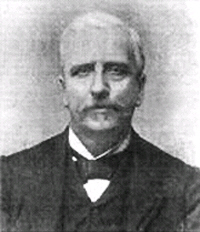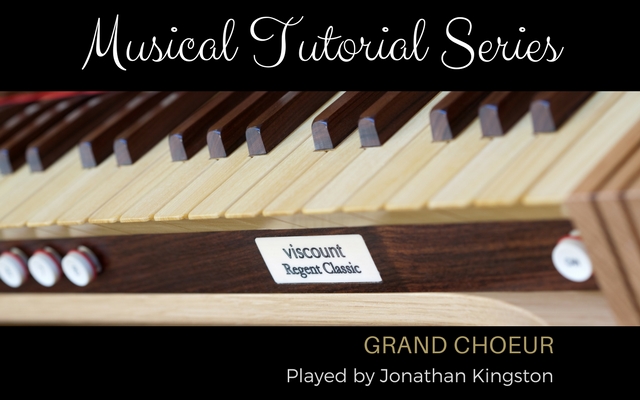Regent Classic’s musical tutorial videos for 2017 feature pieces from the ABRSM organ examination syllabus. Organist Jonathan Kingston is playing on a Regent Classic custom built digital organ which has 69 stops, with all couplers managed from tabs above the Swell manual. Jonathan gives a short introduction to each piece, offering some background and tips about performance and registration.
See the Organ Music Tutorial Series overview for links to more organ videos and information about them. There you will also be able to read more about Jonathan Kingston and the organs being played in this series.
Grand Choeur by Théodore-César Salomé
T his first tutorial deals with Salomé’s Grand Choeur in G major, which appears on the Grade 6 syllabus. Théodore-César Salomé was a Parisian organist and composer during the 1800s, who narrowly missed being installed as titular organist at La Trinité. He nonetheless remained as accompanist on the smaller Cavaillé-Coll choir organ. Salomé was great friends with Guilmant and stood in for him on the Grand Orgue when he was away on concert tours.
his first tutorial deals with Salomé’s Grand Choeur in G major, which appears on the Grade 6 syllabus. Théodore-César Salomé was a Parisian organist and composer during the 1800s, who narrowly missed being installed as titular organist at La Trinité. He nonetheless remained as accompanist on the smaller Cavaillé-Coll choir organ. Salomé was great friends with Guilmant and stood in for him on the Grand Orgue when he was away on concert tours.
Tips on performance and registration playing Grand Choeur
The Grand Choeur in G major is one of Salomé’s better-known pieces. A Grand Choeur would typically employ an arresting registration involving the big reeds, foundations, and possibly cornet of the Great, often coupled to fullish registrations on the other manuals. Opinions differ to some extent about whether the mixtures should be involved, but towards the end of the 1800s they would increasingly be included.
The Grand Choeur on some French organs was sometimes a separate coupler manual on which some combination of all the others could be played, for a full organ effect. In the registration that Jonathan uses here, you can clearly hear the tierce of the cornet in the overall timbre, while he largely avoids the 16’ reeds for improved clarity and articulation.

The outer sections of the piece take the form of a grandiose march, requiring suitable space and breadth. The middle section consists of a nimble fugue. Jonathan recommends reining in the reeds and mixtures for the central fugal section to ensure clarity across all the parts.
As far as articulation is concerned, Jonathan recommends that strength and direction is needed in order to drive the louder moments forward. The fugal section demands poise and consistency in order that the parts remain clearly defined.
Watch the Video Tutorial
If you would like to watch the video tutorial right now – here it is:
I have had a passion for church organs since the tender age of 12. I own and run Regent Classic Organs with a close attention to the detail that musicians appreciate; and a clear understanding of the benefits of digital technology and keeping to the traditional and emotional elements of organ playing.



